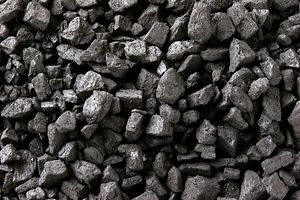A new research report from Greenpeace East Asia’s Beijing office shows that new approvals for coal plants in the first quarter of 2022 added up to 8.63 gigawatts (GW) of coal power – 46.55 percent of the total amount approved in 2021 altogether.
China had effectively pumped the brakes on coal in mid-2021, after the central government’s April announcement that China would “strictly control the expansion of coal power.” A few months later, the price of coal increased. As the market-based price of coal came into friction with the planned price of electricity in China, coal-generated electricity stopped being a profitable business and coal plants around the country went down.
The energy crisis arose in part because of China’s reliance on coal. Nonetheless, official messaging around “energy security” skyrocketed, and new approvals for coal power started to increase as early as Q4 2021. With that trend continuing into Q1 2022, it appears that the coal industry is again moving ahead at full steam, with frustrating consequences for China’s climate and the future of its energy industry.
This return to new coal construction has been marked by frequent references to “energy security” first by the central government. But local governments, evaluated by their ability to boost GDP, have embraced the mantra as well. During the current economic downturn, many turned to coal energy as a well-trodden path to inflating growth numbers. “Energy security” has become a useful way to frame and justify this risky investment.
Throughout 2021 and the first quarter of 2022, six provinces accounted for 65.7 percent of new coal – some of them traditional coal industry provinces – and more than half of the total non-CHP (non-cogeneration) coal-fired power plants approved during this time period were approved for “supplementing shortcomings in local power generation,” a justification related to energy security.
The issue here is that power inadequacies in China come from poor integration of power generation, grid, load, and storage – meaning the grid is not efficient – and not from low capacity to generate electricity. This issue has been pointed out both in the most recent five-year energy plan and by the National Development and Reform Commission in 2021.
China, in fact, has an overcapacity of coal-fired power plants, which leads to abnormal inefficiency in the power system.
Messaging around energy matters in China. For a few months in 2021, after the government’s language on “strictly control[ing] the expansion of coal power,” we saw the real impact that a clear line from the central government could have on China’s energy transition. And over the last quarter of 2021 and the first quarter of 2022, we can already see the muddling effect of mixed messages around “energy security.”
Scrutiny around “energy security” and more attention to what reliable energy supply actually looks like will be an essential step forward in China’s energy transition. So, as a rule moving forward, if coverage of China’s coal sector puts “energy security” in the headline, the concept should be closely examined in the article.

































